Chapter 10: Nurturing Customer Relationships
In the final chapter of this bar journey, we explore the vital importance of nurturing strong customer relationships. Building loyal patrons who keep coming back for more is the key to sustaining the success of your bar in the long run. By focusing on excellent customer experiences and open communication, you can create a thriving community of enthusiasts who become your brand ambassadors.
First and foremost, create a warm and welcoming atmosphere that encourages guests to feel at home. Train your staff to greet every customer with a genuine smile and provide attentive service throughout their visit. Make it a point to remember regulars' names and their favorite drinks, showing that you value their patronage.
Engaging with your customers beyond their visits is equally essential. Leverage your bar's website and social media platforms to keep them informed about upcoming events, new menu additions, and promotions. Regularly respond to customer comments and messages, demonstrating that you value their feedback and opinions.
Now, let's discuss how bar inventory and bar inventory software play a role in nurturing customer relationships. Consistency is key to building trust with your patrons. Bar inventory software helps you maintain inventory levels, ensuring that your customers can enjoy their favorite drinks each time they visit.
Additionally, the software's data insights can offer valuable information on customer preferences. By analyzing sales trends, you can identify popular items and tailor promotions or special offers accordingly. Personalization goes a long way in making customers feel appreciated and valued.
Customer feedback is a goldmine of information. Encourage your patrons to share their thoughts about your bar and its offerings. Consider implementing customer satisfaction surveys or comment cards to gather feedback on their experiences. Take the time to review this feedback and make necessary improvements to address any concerns.
In conclusion, nurturing customer relationships is the cornerstone of a successful and thriving bar. Focus on creating a warm and welcoming environment, engage with your customers both in-person and online, and show them that their satisfaction matters. Utilize bar inventory software to maintain consistency and offer personalized experiences based on customer preferences. By fostering strong connections with your patrons, you'll build a loyal community that will continue to support and elevate your bar for years to come. Cheers to a bright future of lasting customer relationships and continued success!
Liquor Inventory Experts
Topics: Bar inventory, Scannabar Inventory system, managing liquor inventory cost, Bar Management, Liquor Inventory savings, Bar Promotion
Chapter 9: Managing Finances and Operations In this crucial chapter, we delve into the financial and operational aspects of running a successful bar. Managing your finances efficiently and streamlining operations are key to maximizing profits and providing top-notch service to your valued customers.
In this crucial chapter, we delve into the financial and operational aspects of running a successful bar. Managing your finances efficiently and streamlining operations are key to maximizing profits and providing top-notch service to your valued customers.
Let's begin with financial management. Keeping a close eye on your bar's budget is essential for long-term success. Track your revenue and expenses diligently, including inventory costs, staff wages, rent, and marketing expenses. Utilize bar inventory software to gain real-time insights into your inventory expenditure, helping you make informed decisions on pricing and menu offerings.
Bar inventory software plays a pivotal role in optimizing your bar's finances. By accurately tracking ingredient usage and inventory levels, you can minimize waste and reduce overstocking, directly impacting your bottom line. The software's automated features make inventory management more efficient, freeing up time for your staff to focus on customer service.
In addition to financial management, operational efficiency is equally critical for a successful bar. Smooth operations ensure that your bar runs seamlessly during busy hours and special events, leading to a positive customer experience.
Bar inventory software facilitates better operations by providing comprehensive reports on your bar's performance. With this data, you can identify peak hours, predict busy periods, and adjust staffing levels accordingly. Streamlining operations helps prevent bottlenecks, enhances customer service, and increases your bar's overall productivity.
Furthermore, the software's ordering and restocking features enable you to maintain sufficient stock levels without excess inventory, ensuring you're prepared for busy nights without tying up unnecessary capital in inventory.
Regularly assess your bar's operations, seeking opportunities for improvement. Encourage open communication with your team to identify pain points and implement strategies for more effective workflows. A well-organized and motivated team contributes to smoother operations and an improved overall customer experience.
In conclusion, managing finances and operations are the backbone of a successful bar. Use bar inventory software to optimize inventory management, reduce costs, and improve efficiency. Pair it with meticulous financial tracking to ensure your bar's profitability and sustainability. By prioritizing financial responsibility and operational excellence, you'll create a bar that thrives, delights customers, and stands the test of time. Here's to your bar's continued success and prosperity!
Topics: bar profitability, managing liquor inventory cost, Bar Management, liquor control, liquor management, bar inventory app, bar operations
Chapter 8: Marketing and Promotion for your bar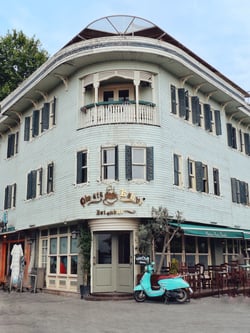
In this chapter, we explore the exciting realm of marketing and promotion for your bar. Effective marketing strategies are essential for attracting new customers, increasing foot traffic, and building a loyal clientele. Whether you're a new bar looking to make a splash or an established one seeking to reinvigorate your brand, a well-crafted marketing plan can make all the difference.
One of the first steps in marketing your bar is to establish a strong online presence. In today's digital age, potential customers often turn to the internet to discover new places to visit. Create a visually appealing and user-friendly website that showcases your bar's unique ambiance, menu offerings, and upcoming events. Optimize your website with relevant keywords related to bar inventory and bar inventory software to improve your online visibility.
Embrace the power of social media to connect with your audience and build a community around your bar. Share enticing images and videos of your signature cocktails, mouthwatering dishes, and vibrant atmosphere. Engage with your followers by responding to comments, running contests, and offering exclusive promotions.
Partnering with local influencers, bloggers, and media outlets can also amplify your bar's reach. Invite them to experience your bar and share their honest reviews with their audience. Positive reviews and word-of-mouth recommendations can significantly impact your bar's reputation.
Now, let's talk about how bar inventory and bar inventory software can play a role in marketing and promotion. Efficient inventory management can lead to cost savings, allowing you to invest in marketing initiatives and promotions. With bar inventory software, you can identify top-selling items and plan targeted promotions around them.
Promote unique events, such as themed nights, live performances, or happy hour specials, to draw in a diverse crowd and create buzz around your bar. Leveraging your bar inventory software's data insights, you can tailor promotions to specific customer preferences and interests.
Finally, consider partnering with local businesses and organizations to cross-promote each other's offerings. Collaborating with nearby restaurants, hotels, or event venues can expand your bar's visibility within the community and attract new customers.
In conclusion, marketing and promotion are crucial for the success of your bar. Establish a strong online presence, leverage social media, and engage with influencers to boost your bar's visibility. Embrace bar inventory software to optimize inventory management and invest in targeted promotions. With a well-executed marketing plan, your bar will thrive and become a go-to destination for patrons seeking exceptional experiences. Cheers to successful marketing that raises a glass to your bar's success!
Topics: liquor theft, managing liquor inventory cost, Bar Management, bar control, Bar Promotion, liquor control
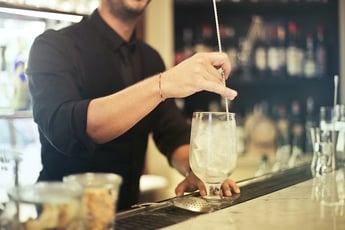 Chapter 6: Building a Stellar Team
Chapter 6: Building a Stellar Team
Behind every successful bar is a team of dedicated and skilled individuals who contribute to its vibrant atmosphere and exceptional service. In this chapter, we'll explore the art of building a stellar team that shares your passion for the industry and is committed to creating memorable experiences for your customers.
The first step in assembling your dream team is defining the roles and responsibilities required to run your bar smoothly. Consider positions such as bartenders, servers, hosts, barbacks, and kitchen staff, depending on the size and scope of your establishment. Each role plays a vital part in delivering top-notch service to your patrons.
When hiring, look for individuals with a genuine love for the hospitality industry and a friendly, positive attitude. Experience is valuable, but an enthusiastic and eager-to-learn mindset can often be more essential. Your team's attitude and demeanor significantly influence the atmosphere of your bar, so prioritize hiring individuals who can create a welcoming and inviting environment.
Once you've assembled your team, invest time in training and development. Provide comprehensive onboarding that covers your bar's values, culture, and service standards. Ongoing training sessions, workshops, and team-building activities can enhance skills, foster camaraderie, and boost morale.
Now, let's discuss how bar inventory and bar inventory software play a role in supporting your team. Efficient inventory management is essential for a well-functioning bar, and it directly impacts your team's ability to serve customers seamlessly. Bar inventory software simplifies this process, allowing your team to focus on delivering exceptional service rather than worrying about inventory-related tasks.
With bar inventory software, your bartenders can access real-time stock levels and ingredient availability, which helps them create drinks efficiently. The software's automated tracking and reordering capabilities ensure that your team always has the necessary supplies on hand, reducing downtime and preventing customer disappointment.
Furthermore, bar inventory software can empower your team to contribute to cost-saving efforts. With accurate data on usage and wastage, they can identify opportunities for improvement, such as portion control and mindful ingredient usage, which ultimately impacts the bar's profitability.
In conclusion, building a stellar team is a crucial aspect of running a successful bar. Hiring passionate individuals, providing comprehensive training, and fostering a positive work environment contribute to exceptional service and a welcoming atmosphere. Combined with bar inventory software for efficient inventory management, your team can focus on what they do best: creating delightful experiences for your valued customers. Cheers to a united and skilled team that takes your bar to new heights!
Topics: Bar inventory, Bar Management, Liquor Inventory savings, bar inventory system, liquor control, bar inventory app
Chapter 5: Designing Your Bar's Atmosphere
Creating the perfect atmosphere in your bar is an art that can make or break the overall experience for your customers. This chapter delves into the essential elements of designing an inviting and unique ambiance that leaves a lasting impression on anyone who walks through your doors.
Lighting sets the mood in any space, and your bar is no exception. Consider the type of atmosphere you want to create – whether it's cozy and intimate or lively and energetic. Dimmable lights and strategically placed fixtures can help you achieve the desired ambiance, allowing you to adjust the lighting as the evening progresses.
Furniture and decor play a vital role in shaping the aesthetics of your bar. From sleek and modern to rustic and vintage, choose a style that complements your bar's concept. Comfortable seating arrangements encourage customers to relax and stay longer, while eye-catching decor pieces can add personality and character to the space.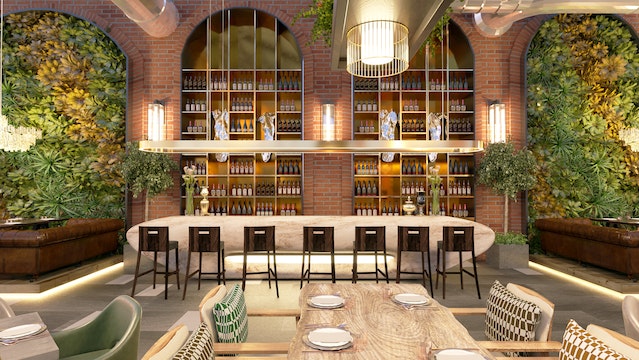
Music selection is another significant aspect of creating the right atmosphere. The music should complement the vibe of your bar and cater to your target audience. Whether it's a live band, curated playlists, or a mix of both, the right music can elevate the overall experience and encourage patrons to return.
Now, let's discuss how bar inventory and bar inventory software play a role in maintaining your bar's atmosphere. A well-designed bar atmosphere goes hand in hand with efficient operations, and that includes keeping your inventory well-stocked and organized. Bar inventory software streamlines this process, ensuring you always have the right ingredients and supplies on hand to serve your customers promptly.
By using bar inventory software, you can set par levels for each item, automatically generate purchase orders, and receive real-time alerts when stock levels are low. This level of control helps prevent inventory shortages and minimizes downtime, allowing your bartenders to focus on creating exceptional drinks and providing top-notch service.
Additionally, efficient inventory management translates to cost savings. By optimizing your inventory, you can reduce waste, prevent overstocking, and make informed decisions about menu pricing. The financial benefits of using bar inventory software contribute to the overall success of your establishment.
In conclusion, designing your bar's atmosphere is an art that involves careful consideration of lighting, furniture, decor, and music. A well-thought-out ambiance enhances the customer experience and encourages repeat visits. When combined with bar inventory software for efficient inventory management, you ensure a seamless operation that keeps your bar running smoothly, ultimately leading to satisfied customers and increased profitability. Cheers to a thriving bar with an ambiance that leaves a lasting impression!
Topics: Bar inventory, Scannabar Inventory system, bartenders you can trust, Bar Management, bar location, bar inventory app
Chapter 1: Dreaming of a Bar
Ah, the dream of opening a bar! It all begins with a flicker of inspiration, a desire to create a space where people can come together, unwind, and indulge in their favorite libations. This chapter is all about embracing that initial spark, nurturing your passion, and laying the foundation for your bar venture.
Picture it: the laughter, the clinking of glasses, the vibrant energy in the air. The dream of a bar is often fueled by a love for socializing and a deep appreciation for the art of mixology. You imagine a place where friends, old and new, gather to share stories, celebrate milestones, or simply enjoy a momentary escape from the everyday grind.
But dreams alone aren't enough. This chapter reminds you that turning your vision into reality requires careful planning and research. It's about recognizing the challenges and opportunities that lie ahead, and taking the necessary steps to bring your dream to life.
You'll start by exploring your motivations and goals for opening a bar. Is it about creating a cozy neighborhood pub or an upscale cocktail lounge? Are you driven by a passion for craft beer or a love for inventive cocktails? Clarifying your vision will serve as a guiding light throughout the entire process.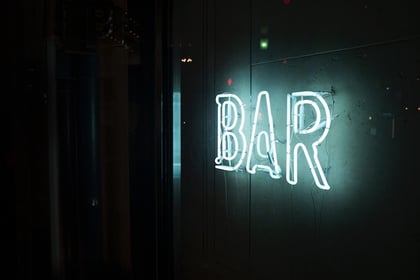
Next, you'll delve into market research. Understanding your target audience, local competition, and industry trends will help you carve out a unique space in the market. You'll assess the demand for your concept and identify potential gaps to fill.
Of course, financial considerations come into play as well. This chapter prompts you to conduct a preliminary assessment of costs involved in opening a bar, from securing a location to purchasing equipment and obtaining licenses. It's essential to develop a realistic budget and explore potential funding options early on.
Lastly, this chapter encourages you to surround yourself with a network of support. Seek advice from experienced bar owners, connect with industry professionals, and consider partnering with individuals who share your passion and complement your skill set.
In the end, this chapter reminds you that dreaming of a bar is just the beginning. It's about embracing that initial spark and channeling it into action. So, put pen to paper, visualize your dream, and let the adventure unfold as you embark on the path towards opening your own bar. Cheers to your dreams becoming a reality!
Topics: Bar inventory, Bar trends, NightClub Management, Lineup control, Bar Management, Nightclub Consulting, Control
I ntroduction: A 10 Part Tutorial.
ntroduction: A 10 Part Tutorial.
Welcome to the world of opening a bar, where dreams of creating a vibrant social hub come to life. In the following chapters, we will embark on a journey through the various aspects of turning your vision into reality. From the initial spark of inspiration to the finer details of managing operations, we'll explore the key elements that contribute to a successful bar.
Chapter by chapter, we'll guide you through the exciting and sometimes challenging process of opening up a bar. You'll gain insights into the legalities of licenses and permits, learn the art of selecting the perfect location, and discover the secrets of crafting a menu that entices your customers.
We'll dive into the importance of designing an inviting atmosphere and building a stellar team that brings your vision to life. You'll delve into the world of mixology and explore marketing strategies to attract patrons to your establishment. We'll also delve into financial management and customer relationship building, emphasizing the significance of nurturing connections with your guests.
Whether you're a seasoned entrepreneur or a passionate enthusiast, this guide will provide you with valuable knowledge and practical advice to set you on the path to a thriving bar. So, let's raise a glass and begin this exciting journey together!
Topics: Bar inventory, Bar trends, Classic drinks, Bar Management, Increasing Profits, Loss prevention, Hospitality, Drink Recipes, Bar Promotion

Maintaining effective bar inventory control is essential for the smooth operation of a bar, and implementing best practices within a "bar inventory system" and "liquor inventory system" can optimize inventory management. Let's explore some key best practices for bar inventory control.
-
Categorize and Organize: Properly categorize and organize inventory items such as liquor bottles, kegs, mixers, and garnishes. This ensures easy identification, efficient counting, and reduces the chances of errors.
-
Accurate Measurement: Use calibrated measuring tools to accurately measure initial stock levels and track consumption. Precise measurements help maintain accurate inventory records and prevent discrepancies.
-
Regular Inventory Counts: Conduct regular inventory counts to monitor stock levels and identify any variances. Consistency in counting ensures accurate records and allows for timely reordering.
-
Set Par Levels: Determine par levels for each inventory item based on historical data, sales trends, and customer demand. These levels act as thresholds, triggering reordering when stock reaches a specified minimum.
-
FIFO Method: Implement the "first in, first out" (FIFO) method to ensure older inventory is used before newer stock. This prevents spoilage, minimizes waste, and maintains product quality.
-
Technology Integration: Utilize bar inventory systems or liquor inventory management software to streamline inventory control. These systems provide real-time tracking, automate reordering, and generate reports for analysis and decision-making.
-
Supplier Relationships: Cultivate strong relationships with suppliers to ensure reliable and timely deliveries. Regular communication with vendors helps negotiate favorable terms, secure competitive pricing, and address any supply chain issues.
-
Staff Training: Train bartenders and staff on inventory control best practices, including accurate pouring techniques and minimizing spillage. Educate them about the importance of inventory management and their role in maintaining accurate records.
-
Loss Prevention Measures: Implement measures to prevent theft and reduce losses, such as surveillance cameras, bottle locks, and secure storage areas. Staff awareness and vigilance play a crucial role in preventing inventory shrinkage.
-
Data Analysis and Adjustment: Analyze inventory data regularly to identify trends, patterns, and areas for improvement. Adjust inventory levels, ordering strategies, and pricing based on data insights to optimize inventory control and profitability.
By implementing these best practices, bars can establish effective bar inventory systems and liquor inventory systems. Accurate tracking, efficient stock management, and minimized waste contribute to improved profitability and customer satisfaction. Bar inventory control is a continuous process that requires attention, adaptability, and a commitment to optimizing operations.
Topics: Bar inventory, Bar Management, bar control, liquor control, bar inventory software
 Bar inventory management can present several challenges that require effective solutions to ensure accurate tracking and control of inventory, especially within a "bar inventory system" and "liquor inventory system." Let's delve into some common challenges and their solutions in bar inventory management.
Bar inventory management can present several challenges that require effective solutions to ensure accurate tracking and control of inventory, especially within a "bar inventory system" and "liquor inventory system." Let's delve into some common challenges and their solutions in bar inventory management.
-
Manual Counting Errors: Manual counting can lead to human errors, resulting in inaccuracies in inventory records. To mitigate this challenge, bars can implement barcode scanning systems or digital inventory management software. These automated systems minimize human errors and provide accurate inventory counts.
-
Inefficient Reordering: Without a proper system in place, bars may struggle with inefficient reordering processes. The solution lies in utilizing inventory control systems that automate reordering based on predefined par levels. This ensures timely replenishment, reduces stockouts, and optimizes inventory levels.
-
Shrinkage and Losses: Bars often face challenges related to shrinkage, including theft, spillage, and over-pouring. Implementing security measures such as surveillance cameras, liquor bottle locks, and training staff on proper inventory control can help mitigate these losses.
-
Poor Inventory Visibility: Lack of visibility into real-time inventory levels can hinder efficient operations. Utilizing bar inventory systems or liquor inventory management software provides real-time tracking and visibility into stock levels, enabling proactive decision-making.
-
Data Management: Managing inventory data manually can be time-consuming and prone to errors. Digital inventory management systems offer centralized data storage, streamlining data management and ensuring accuracy, accessibility, and ease of analysis.
-
Variability in Demand: Bars often face fluctuations in customer demand, making it challenging to accurately forecast and manage inventory levels. The solution lies in analyzing historical sales data, seasonal trends, and customer preferences to make informed ordering decisions and optimize inventory based on demand patterns.
-
Vendor Management: Inconsistent or unreliable suppliers can disrupt inventory management. Building strong relationships with reputable vendors, negotiating favorable terms, and maintaining open communication ensures reliable supply chain management and minimizes disruptions.
-
Training and Education: Inadequate training and education on inventory management practices can hinder efficiency. Regularly train staff on inventory control procedures, proper pouring techniques, and the importance of minimizing waste to enhance overall inventory management.
-
Integration Challenges: Integrating inventory management systems with existing POS systems or other software may present technical challenges. Collaborating with experienced IT professionals or consulting with inventory management software providers can help ensure seamless integration and functionality.
-
Ongoing Monitoring and Analysis: Continuously monitoring and analyzing inventory data is crucial for identifying trends, addressing issues promptly, and making informed decisions. Regularly review inventory reports, conduct audits, and implement adjustments to optimize bar inventory management.
By addressing these challenges with effective solutions, bars can enhance their bar inventory systems and liquor inventory systems, ensuring accurate tracking, cost control, waste reduction, and improved profitability. Implementing automated systems, utilizing data-driven insights, and fostering strong vendor relationships contribute to efficient bar inventory management and a successful establishment.
Topics: liquor inventory, Bar Management, liquor control, liquor management
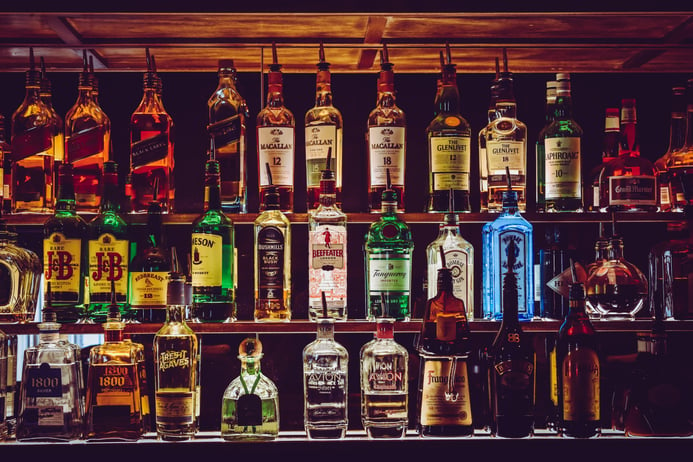
Accurate management of bar inventory holds immense importance for the prosperity and profitability of any establishment in the vibrant hospitality industry. It entails the meticulous monitoring, recording, and control of all items within the bar, including liquors, beers, wines, mixers, garnishes, and other essential supplies. Understanding the significance of precise bar inventory management is crucial, especially when it comes to keywords like "liquor inventory," "bar inventory," and "liquor control." Let's delve into the reasons why accurate management in these areas is critical:
-
Effective Liquor Inventory Control: A well-executed liquor inventory management system enables bars to exercise better control over their stock of alcoholic beverages. By accurately tracking liquor inventory levels and consumption patterns, bars can minimize losses due to theft, over-pouring, or wastage. This enhances the overall efficiency of liquor inventory control.
-
Optimized Bar Inventory Management: Accurate bar inventory management extends beyond just liquor. It encompasses a comprehensive understanding and control of all items within the bar. By implementing efficient inventory tracking systems, bars can optimize their stock levels, reduce waste, and prevent stockouts. This approach enhances the overall profitability of the establishment.
-
Cost Optimization in Bar Operations: Liquor is often a significant cost component for bars. Accurate liquor inventory management allows bars to control costs effectively. By identifying areas of excessive waste or unauthorized consumption, bars can take corrective measures to reduce costs and maximize profits. This ensures that the bar operates efficiently and remains financially viable.
-
Preventing Liquor Theft and Pilferage: Bars are susceptible to liquor theft, which can have a substantial impact on profitability. Accurate liquor inventory management helps identify discrepancies between recorded sales and actual inventory levels. By promptly detecting and addressing potential issues like employee theft or unauthorized usage, bars can safeguard their inventory and minimize losses.
-
Streamlined Ordering and Replenishment: Accurate bar inventory management facilitates efficient ordering and replenishment processes. By analyzing liquor consumption patterns and turnover rates, bars can make informed decisions about when and how much liquor to order. This prevents stockouts, ensures a constant supply of popular liquor items, and enhances customer satisfaction.
In summary, accurate management of liquor inventory and overall bar inventory is vital for optimizing costs, preventing theft, streamlining operations, and ensuring profitability. By implementing effective inventory tracking systems and employing strategies that focus on "liquor inventory," "bar inventory," and "liquor control," bars can operate efficiently, deliver exceptional customer experiences, and maximize their success in the competitive hospitality industry.
Topics: Bar Management, Liquor Inventory savings, Reducing Costs


